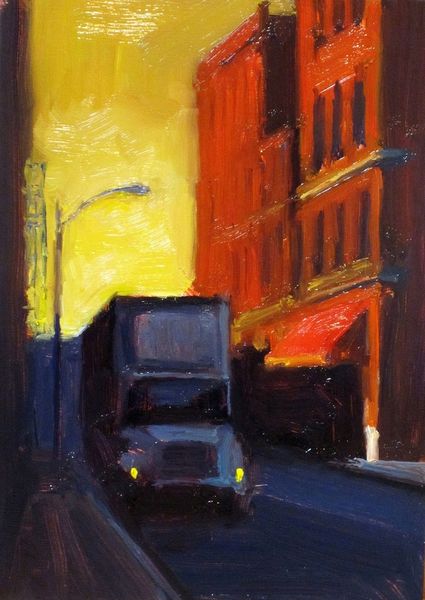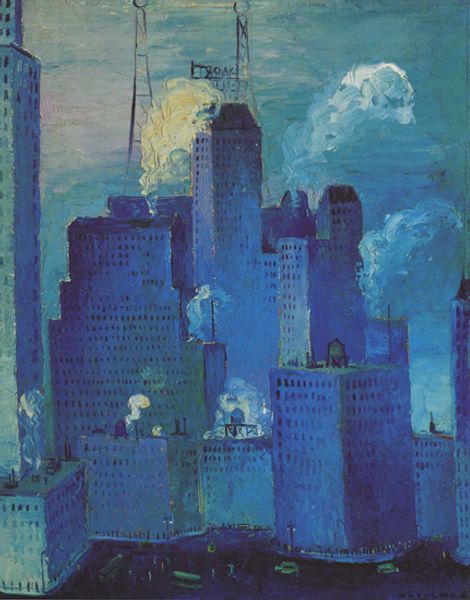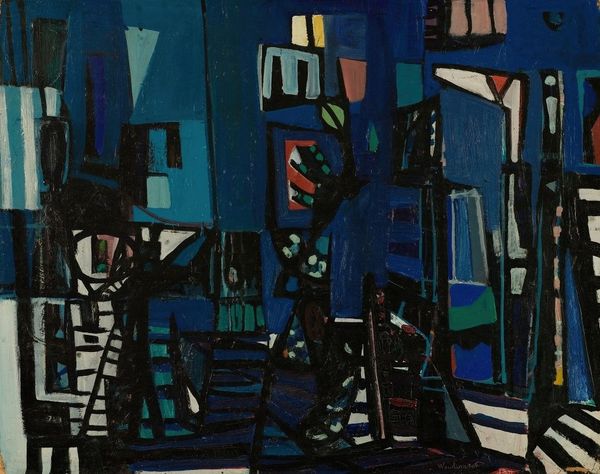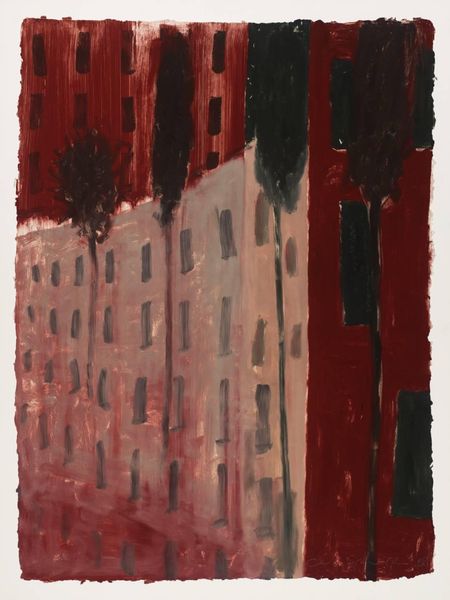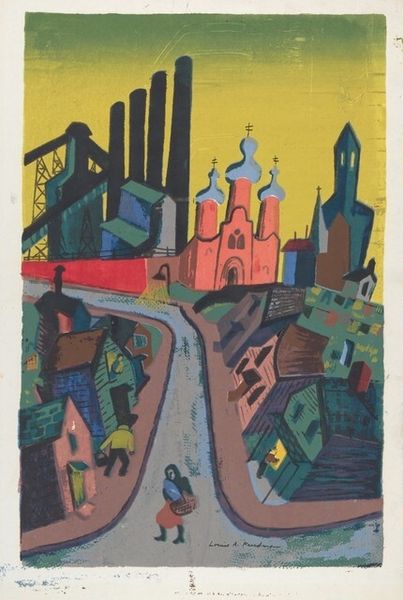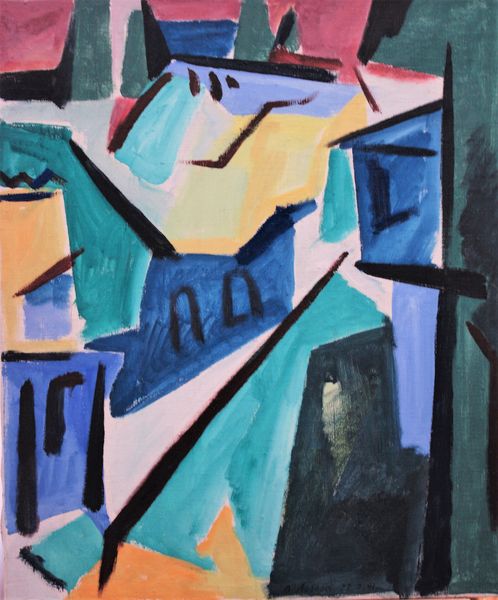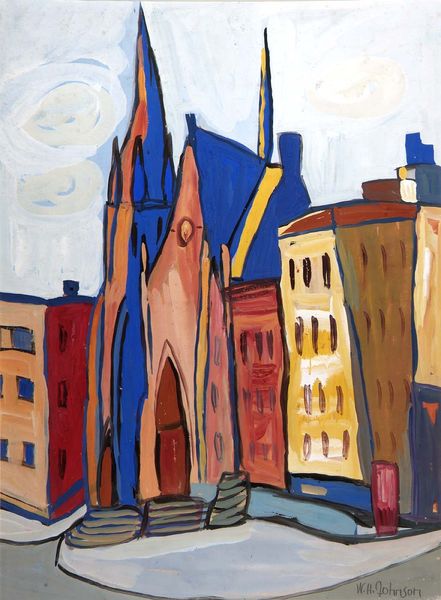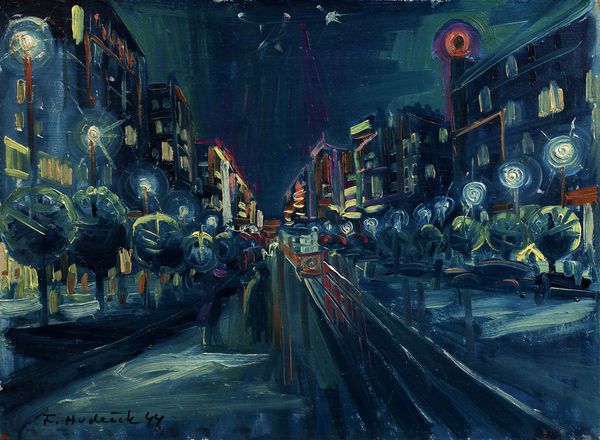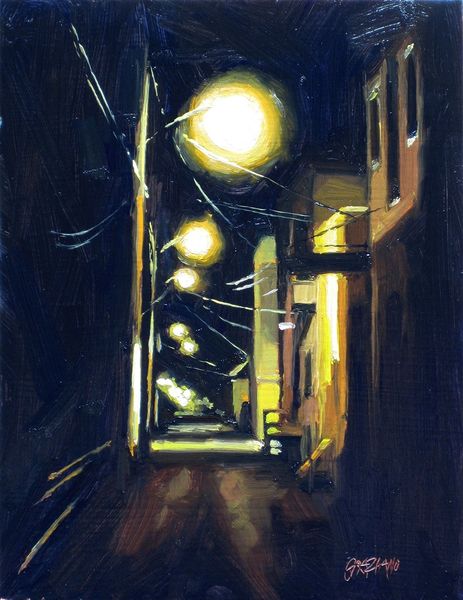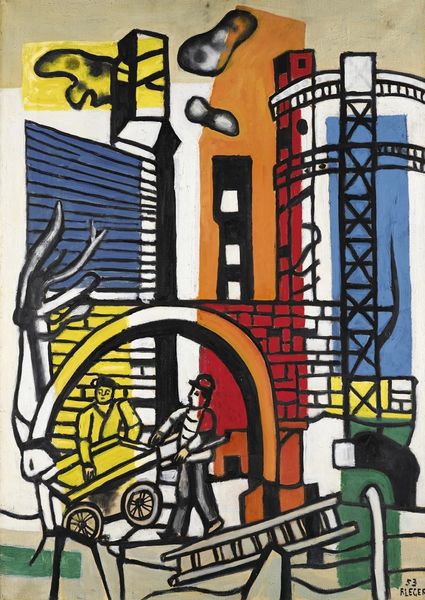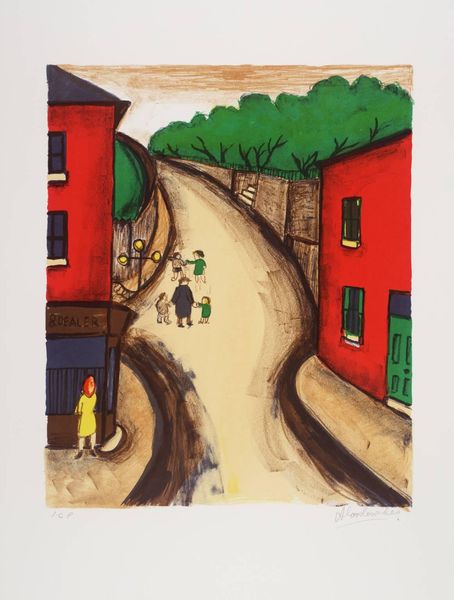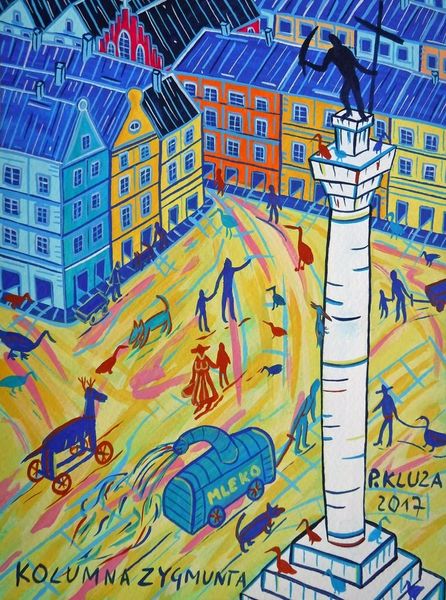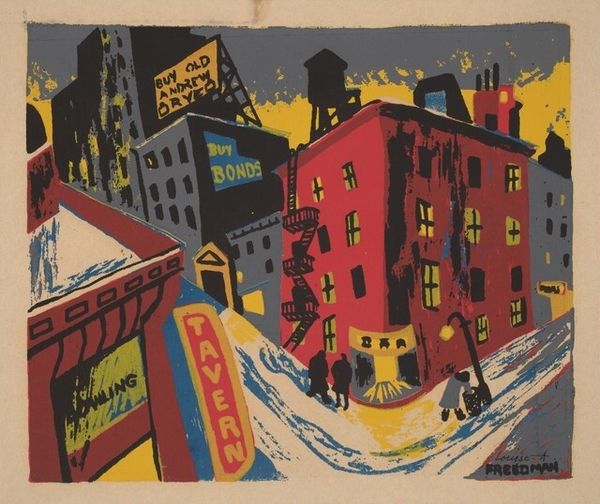
painting, oil-paint
#
painting
#
graffiti art
#
oil-paint
#
caricature
#
harlem-renaissance
#
naïve-art
#
naive art
#
cityscape
#
genre-painting
Copyright: William H. Johnson,Fair Use
Curator: William H. Johnson's "Harlem Street Scene with Full Moon," created around 1940 using oil paint, offers us a vibrant glimpse into urban life during the Harlem Renaissance. Editor: My initial impression is a childlike wonder, perhaps even a deliberate naiveté. The buildings are boxy, the moon an almost comically large yellow disc. There’s a flattened perspective that simplifies the scene, yet it still manages to evoke a distinctive atmosphere. Curator: That deliberate naiveté, I believe, is Johnson’s way of engaging with the modernist primitivism movement, but always through the lens of his own cultural experiences. The Harlem Renaissance was about reclaiming and celebrating Black identity. How does Johnson contribute to that dialogue here, in your opinion? Editor: The stark color palette and simplified forms—browns, yellows, and blues—create a powerful visual impact, evoking both warmth and a sense of stark urban reality. It’s less about detail and more about emotional resonance. The exaggeration creates a sense of almost fairytale world. The oversized moon presiding over everything… it lends the piece an interesting spiritual or magical dimension. Curator: Yes, exactly. And, if we think of Harlem at this period as the 'Black Mecca', then maybe the yellow moon is there to remind people that Harlem was a beacon, shining like a big yellow moon in the night sky, attracting and illuminating a generation of Black creatives and thinkers, providing opportunities, fostering a vibrant community in the face of adversity and systemic racism. And yet this idealized space is presented as a space like any other with its architecture, roads, and lights that serve to further advance modern life. Editor: Looking closely at the composition, the road leads our eye into the distance. I love how Johnson used the strong verticals of the buildings and streetlights against the curves of the road to lead the eye up to that celestial body that you talk about. Curator: Understanding the social and political backdrop of Harlem in the 1940s enriches the piece immeasurably, though, don’t you think? This wasn't simply an artistic expression; it was a statement. Johnson gives the public a means to imagine a space so fundamental to understanding the history of race. Editor: Definitely, that historical weight is present even if the presentation feels lighthearted. The simplified visual vocabulary emphasizes the feeling and emotional intensity. I’ll think differently about how I perceive paintings like this one from now on. Curator: I concur. Understanding how social contexts influence even the seemingly simplest composition changes how we interpret and give worth to art. Thank you.
Comments
No comments
Be the first to comment and join the conversation on the ultimate creative platform.
